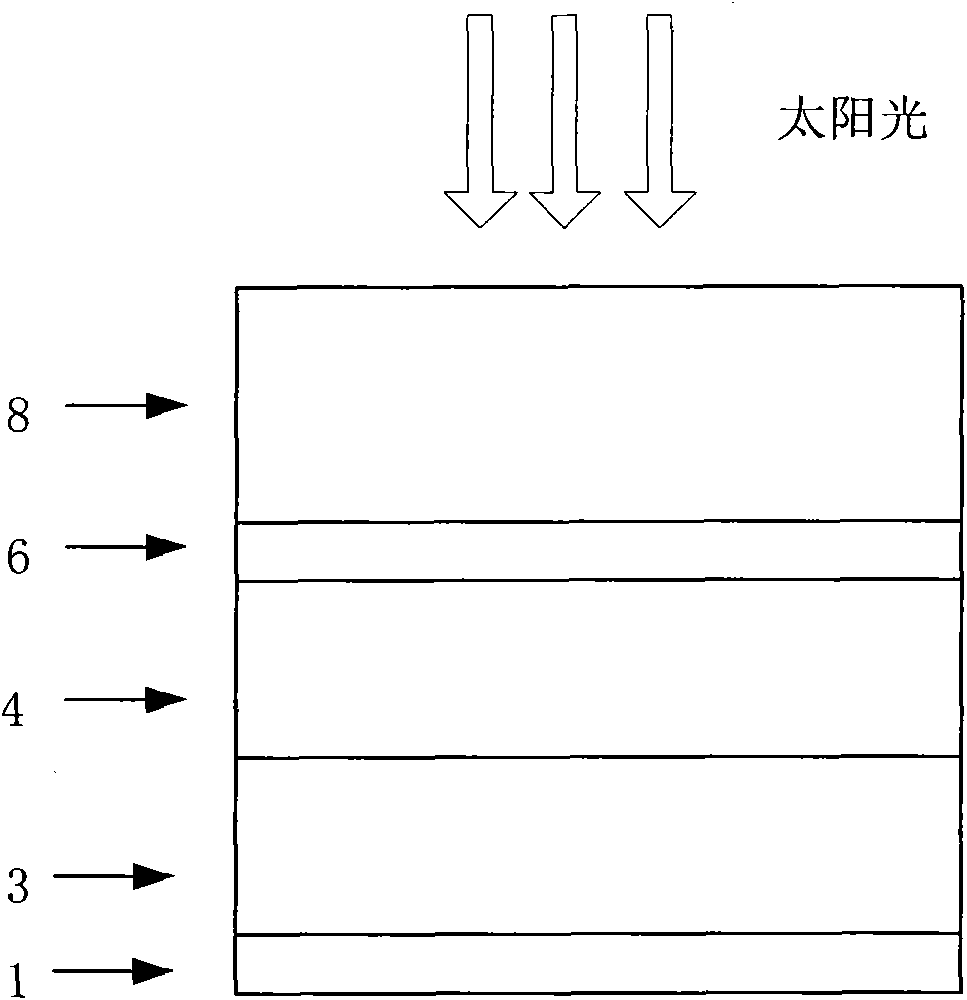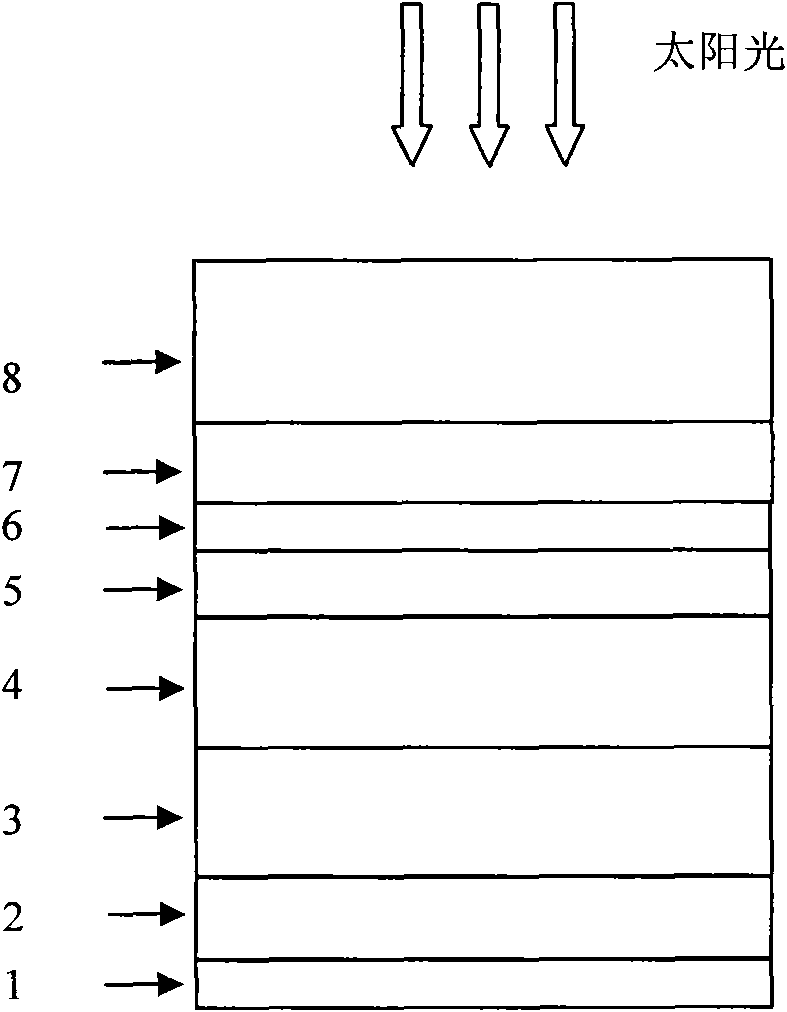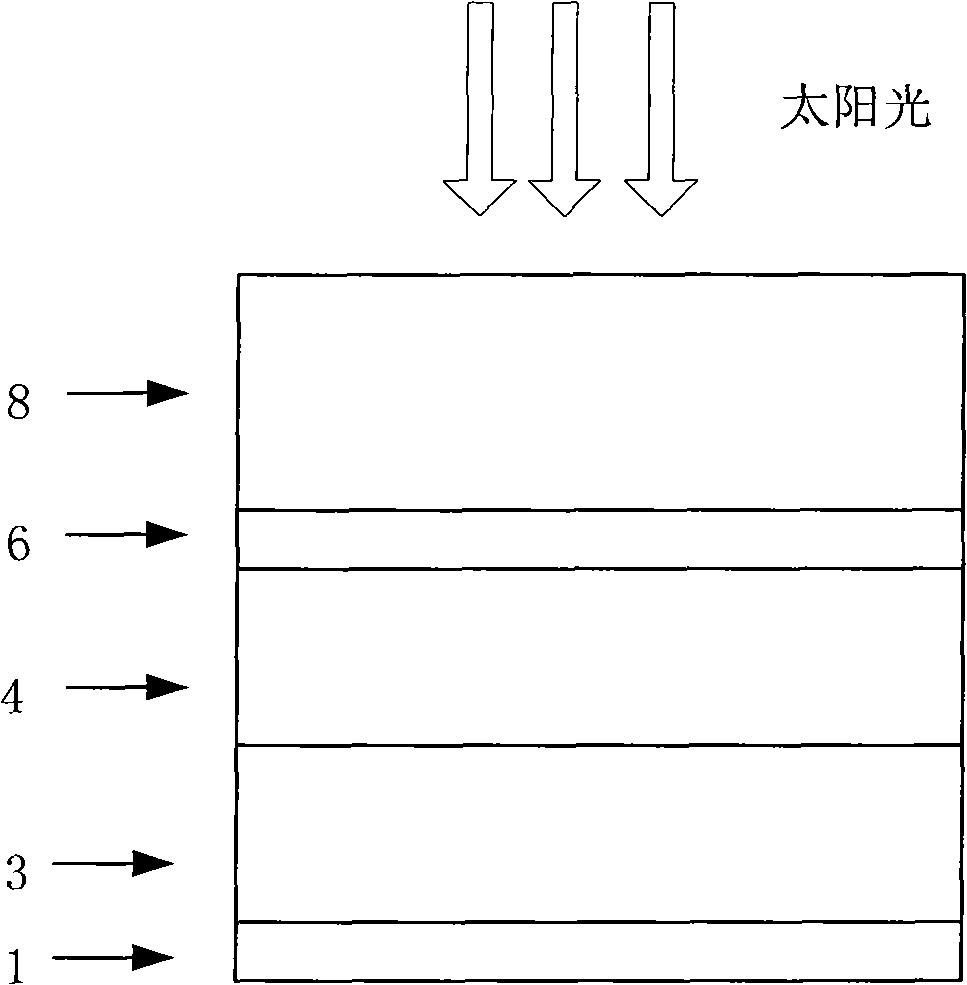Solar battery
A solar cell and electrode technology, applied in the field of solar cells, can solve the problems of low utilization rate of the solar spectrum, the efficiency cannot meet the requirements of large-scale industrialization, and the performance of solar cell devices is unfavorable, so as to improve the utilization rate, improve the photoelectric conversion performance, Avoid the effects of thermal effects
- Summary
- Abstract
- Description
- Claims
- Application Information
AI Technical Summary
Problems solved by technology
Method used
Image
Examples
Embodiment 1
[0044] The structure of the solar cell of the present embodiment is as figure 2 As shown, the first electrode 1 is made of Al thin film electrode, and the buffer layer 2 is made of Alq 3 film, the first photosensitive layer 3 adopts C 60 thin film, the second photosensitive layer 4 adopts CuPc copper phthalocyanine thin film, the buffer layer 5 adopts PEDOT:PSS polymer conductive film, the second electrode 6 adopts ITO thin film electrode, the transparent insulating layer 7 adopts quartz glass, and the down conversion layer 8 adopts Eu 3+ Doped LiGdF 4 film.
[0045] Concrete preparation process is as follows:
[0046] ① Prepare a layer of ITO conductive film by sputtering on one side of quartz glass with a thickness of 1.1mm, and etch to form the anode of the solar cell. The thickness of the ITO conductive film is about 110nm, and the sheet resistance is 15 ohms / square;
[0047] ② Prepare PEDOT:PSS film by spin coating on the ITO conductive film, the spin coating speed i...
PUM
| Property | Measurement | Unit |
|---|---|---|
| thickness | aaaaa | aaaaa |
| reflectance | aaaaa | aaaaa |
Abstract
Description
Claims
Application Information
 Login to View More
Login to View More - R&D
- Intellectual Property
- Life Sciences
- Materials
- Tech Scout
- Unparalleled Data Quality
- Higher Quality Content
- 60% Fewer Hallucinations
Browse by: Latest US Patents, China's latest patents, Technical Efficacy Thesaurus, Application Domain, Technology Topic, Popular Technical Reports.
© 2025 PatSnap. All rights reserved.Legal|Privacy policy|Modern Slavery Act Transparency Statement|Sitemap|About US| Contact US: help@patsnap.com



